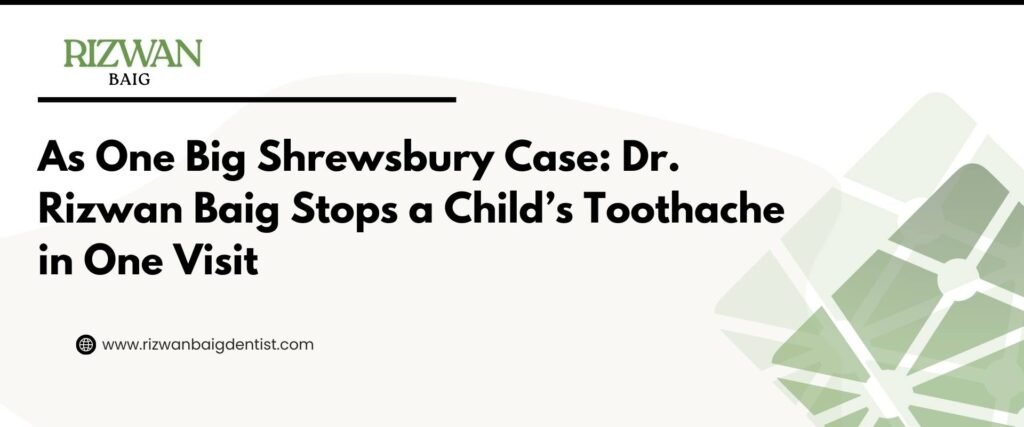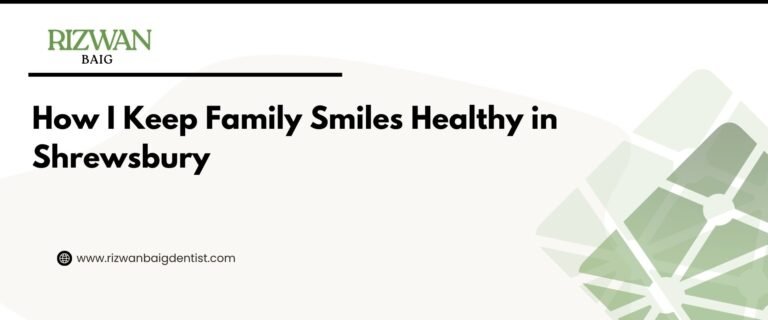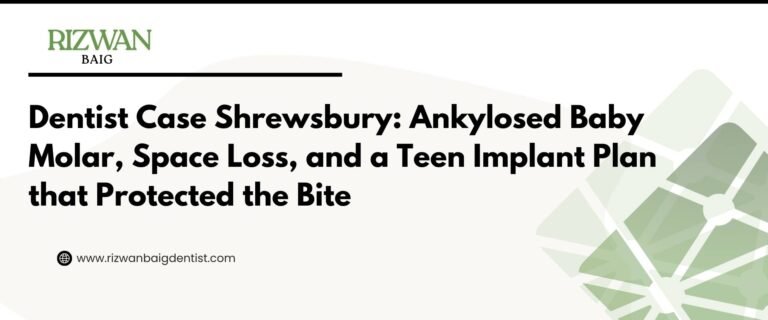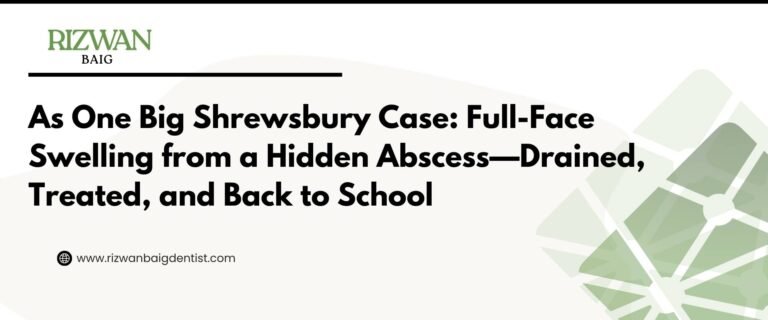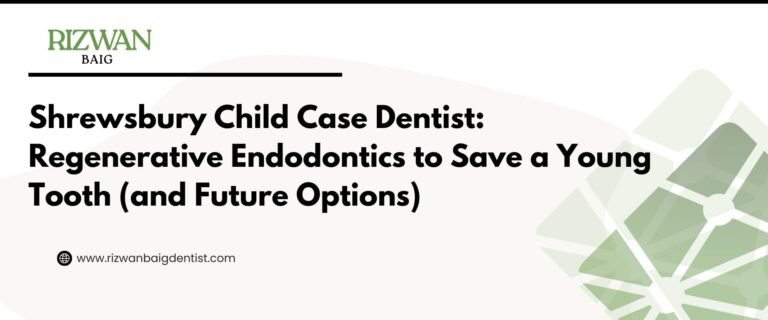The midnight worry that brought a family to our door
When a parent calls at night describing a child who can’t sleep, can’t chew, and clutches the side of their face, it feels as one big Shrewsbury case—urgent, emotional, and time-sensitive. Dr. Rizwan Baig arranged an early-morning visit so pain relief could happen first, not last. He welcomed the family, spoke directly to the child in simple, friendly language, and set the tone: “We’ll make this easy.”
Why fast relief matters in growing smiles
Young permanent molars erupt with wide canals and more delicate nerve tissue. Inflammation can escalate quickly; the goal is to calm things down, save the tooth, and keep growth on track.
Diagnosis with a light touch (and low radiation)
A focused exam with low-dose digital X-rays and thermal testing revealed deep decay close to the nerve of a lower first permanent molar. The gum was tender; cold lingered uncomfortably. The good news? No facial cellulitis, no trismus, and bone around the roots looked healthy—ideal for conservative, tooth-saving care.
What we ruled out—together
Dr. Baig showed the parent and child the X-ray in plain English. This wasn’t “just a cavity,” but it also wasn’t an automatic extraction. With the root still maturing, saving the natural tooth would protect spacing, chewing strength, and confidence.
Comfort-first treatment: child-friendly nerve therapy
Numbing started with topical gel, then slow anesthesia and a “wiggle test” to confirm comfort. A small rubber dam went on to keep things dry and safe. Dr. Baig performed a partial pulpotomy using a bioceramic liner—think of it as a soothing, protective layer that lets the deeper nerve settle and continue to develop.
Step-by-step clarity reduces fear
He explained each sound and sensation before it happened: “You’ll feel water; you’ll hear a toothbrush noise.” A temporary seal became a durable, tooth-colored restoration before they left, avoiding a second numbing visit.
The result: pain gone, appetite back, school day saved
By bedtime, the child was eating soft foods without sharp zings. At the two-week review, chewing felt normal. Three months later, the X-ray showed stable healing and continued root development.
Keeping the win: prevention on autopilot
Sealants on the other molars, a quick fluoride routine, and snack swaps turned an emergency into a long-term success plan. For families searching Dentist case Shrewsbury outcomes, this case shows how a gentle, conservative save can change a week—and a smile.

